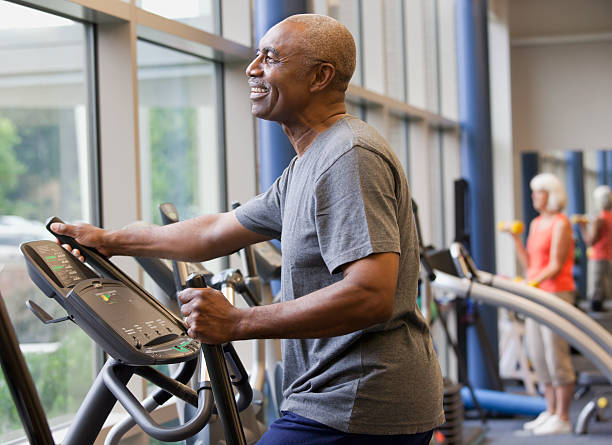Exercising is very healthy for a person suffering from high blood pressure, but it might be dangerous if it is not done correctly.
It is important to exercise correctly and manage your health properly. In this article, we will discuss some exercise tips for those with high blood pressure.
However, is it safe for someone with high blood pressure to exercise?
Is it safe to exercise when you have high blood pressure?
Being active is very healthy as it can help control your blood pressure. While exercising, you must observe your body and how it feels and behaves during and after the activity.
If you feel any form of persistent chest pain, sudden weakness, dizziness, or pain in the neck, shoulder, or jaw while or after exercising, stop immediately and see your doctor.
However, it is normal for your heart to beat faster and sweat harder while exercising.
The best advice when it comes to exercising when you have high blood pressure is to speak to your doctor or nurse first before you start any new exercise.
Exercise Tips for Those with High Blood Pressure
1. Go for moderate activity
As a high blood pressure patient, you should avoid vigorous exercise. Go for moderate exercise like brisk walking for at least 30 minutes a day, jogging for 2- minutes, or swimming for 20 minutes if you have a poll nearby.
2. Warm up before excising
Do not hop on the road and begin to jog or exercise. You might injure your body. Warming up helps to get your body moving and ready.
3. Don’t overdo it
You should be able to talk to someone while exercising. If you are running out of breath, please cool down and rest.
Some exercises to avoid when you have high blood pressure include weight lifting, playing squash, sprinting, skydiving and SCUBA diving.
4. Do not stop suddenly when you are done
Stopping suddenly can be dangerous for someone with high pressure. If you are done, slow down gradually and stop. Do not just stop at the apex of the activity.
Furthermore, if you have high blood pressure, you should also avoid exercises that requires sudden bursts of activity or strain.
5. Exercise regularly
Do not exercise today and wait until the following week. Infuse your exercise schedule into your weekly plan. Do not take the exercise routine as a duty. Take it as fun. This way, you begin to enjoy it and become more committed to it.
Exercising frequently is said to be a drug free way to reduce high blood pressure.

5 Recommended Exercise for Those with High Blood Pressure
1. Brisk or moderate walking
Exercise is helpful for patients with high blood pressure because it helps to reduce the stiffness of the blood vessel so that blood can easily flow.
Health professionals state that a good way to combat high blood pressure is to break up your workout into several sessions during the day.
A study says that three 10-minute walks a day is more effective in preventing future high blood pressure spikes than one 30-minute trek in a day. Also, you can go for three 10 minutes rounds of cycling.
2. Hiking
Hiking has been shown to lower high blood pressure by 10 points. Hiking demands increased muscle involvement, which helps you achieve solid physical fitness.
3. Swimming
Swimming is effective in reducing blood pressure in seniors 60 years and older. 45 minutes of continuous swimming daily can help to reduce your systolic blood pressure average by nine points
4. Desk treadmilling or pedal pushing
Desk treadmilling or pedal pushing is an effective way to control blood pressure in the elderly. If you can’t go outside, or dong the winter, you can work out on the treadmill indoors.
5. Light resistance training
This might sound vigorous, but it is very effective in controlling blood pressure. However, moderation should be observed because strength training temporarily raises blood pressure levels, but is it good for overall fitness?
Conclusion
The above exercise tips for those with high blood pressure is imperative for your health and overall wellbeing. It is important in managing your condition and in preventing it from worsening.
The benefits of exercise cannot be sustained if the exercise is not continuous. The standard recommendation is 150 minutes per week for moderate exercise or 75 minutes per week for vigorous exercise.
ALSO READ:
- 7 Best Exercises To Do In The Morning
- 5 Best Exercises To Do When Bloated
- 5 Best Exercises To Do After Eating
- 4 Easy Exercises For Building Muscles At Home
- 3 Best Exercises For Reducing Cellulite
- 5 Best Exercises To Do While Intermittent Fasting
- 4 Best Exercises For Bigger Legs At Home.
- 5 Important Exercise Tips For The Cold Weather
- 3 Exercises That Can Make You Taller



